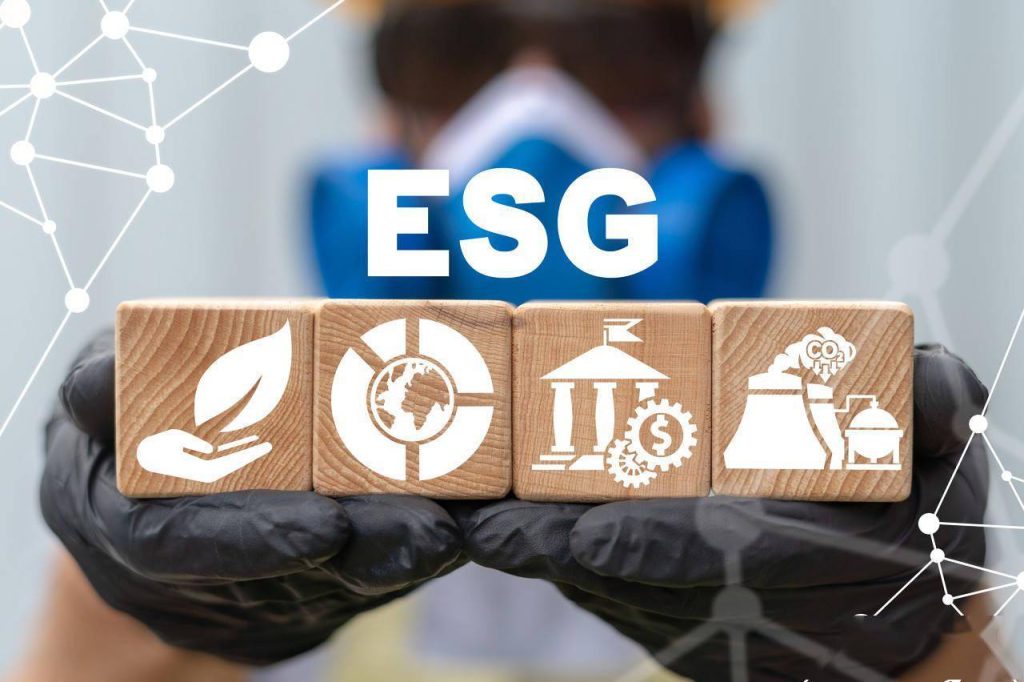Introduction
In recent years, Environmental, Social, and Governance (ESG) investing has become a major trend across all asset classes, with investors increasingly seeking ways to align their portfolios with sustainable practices and ethical standards. One area where this shift has been particularly noticeable is in the fixed-income market, with the rise of ESG bonds offering a new way for investors to achieve socially responsible investment goals while maintaining a focus on income generation.
ESG bonds—whether issued by governments, corporations, or other entities—are designed to fund projects and initiatives that meet specific ESG criteria, such as reducing carbon emissions, improving social equality, or enhancing corporate governance. These bonds have gained significant traction, not just among impact investors, but also among traditional institutional investors looking to integrate ESG factors into their portfolios.
The question then arises: Can the growth of ESG bonds fundamentally alter investor demand for fixed-income products and reshape investment strategies in the bond market? This article explores how the rise of ESG bonds is influencing the broader fixed-income landscape, examining how these bonds may impact investor behavior, market trends, and the broader investment strategies employed by both retail and institutional investors.
I. Understanding ESG Bonds: What Are They?
ESG bonds are a subset of green bonds, social bonds, and sustainable bonds, but they encompass a broader range of bonds that adhere to certain environmental, social, and governance criteria. These bonds serve the dual purpose of offering income to investors while financing projects or initiatives that aim to generate positive social or environmental outcomes.
There are several types of ESG bonds:
- Green Bonds: Green bonds are specifically issued to fund environmentally sustainable projects, such as renewable energy, energy efficiency, or pollution control initiatives. The proceeds of green bonds are earmarked exclusively for projects that contribute to environmental sustainability.
- Social Bonds: These bonds are issued to support social initiatives such as affordable housing, healthcare projects, or education programs. The focus is on projects that directly benefit underprivileged communities or contribute to improving social equity.
- Sustainability Bonds: Sustainability bonds combine elements of both green and social bonds, funding projects that address both environmental and social goals. These bonds aim to have a positive impact on a broader range of sustainable development objectives.
- ESG-Linked Bonds: Unlike green or social bonds, ESG-linked bonds are not specifically tied to a particular project. Instead, the terms of the bond (e.g., coupon payments or interest rates) are linked to the issuer’s performance in meeting certain ESG targets (such as carbon emissions reduction or improving workforce diversity).
The issuance of ESG bonds has surged in recent years as investors increasingly demand products that align with their ethical values. A growing number of corporations, governments, and financial institutions are responding to this demand by issuing ESG-compliant bonds to finance projects that contribute to a sustainable future.
II. The Rise of ESG Bonds: Trends and Growth
The demand for ESG bonds has seen significant growth in the past decade, driven by several factors:
- Investor Demand for Ethical Investing: The increasing desire among both institutional and retail investors to incorporate sustainability and responsibility into their portfolios has led to a sharp rise in ESG bond issuance. Many investors—particularly younger generations—are prioritizing environmental and social issues in their investment decisions, prompting a shift toward ESG-focused financial products.
- Regulatory Support and Policy Initiatives: Governments around the world are implementing policies and regulations that encourage the issuance of ESG bonds. For instance, the European Union has introduced a sustainable finance action plan, which includes guidelines for green bonds, while China has become one of the largest issuers of green bonds globally. As regulatory frameworks surrounding ESG investments strengthen, the appeal of ESG bonds continues to grow.
- Increasing Corporate Accountability: Companies are under mounting pressure from shareholders, customers, and governments to improve their ESG performance. This has spurred many corporations to issue ESG bonds as part of their broader corporate social responsibility (CSR) efforts, with the proceeds used to fund sustainability initiatives or improve governance practices.
- Performance and Risk Considerations: There is also growing evidence that ESG investments can perform just as well, or even better, than traditional investments. Some studies have shown that companies with strong ESG practices tend to have better long-term financial performance and lower credit risk. As a result, ESG bonds are becoming an attractive option for risk-conscious investors who also wish to support sustainable development.
- Increasing Availability and Liquidity: As the market for ESG bonds matures, more options are available to investors, increasing the liquidity of ESG products and making it easier for investors to build diversified portfolios with ESG exposure. ESG bond indices and ETFs have also become more common, providing investors with simple ways to gain broad exposure to the market.
III. How ESG Bonds Are Changing Fixed-Income Investment Strategies
The rise of ESG bonds is influencing investor demand for fixed-income products and reshaping investment strategies in several ways:
- Diversification and Risk Mitigation: ESG bonds can offer investors a new avenue for diversification, as they are often tied to projects that address specific environmental or social needs. Moreover, these bonds may help mitigate long-term risk by focusing on issuers who are better prepared for future regulatory challenges or changing consumer preferences. For example, companies that are heavily invested in renewable energy or sustainable practices may be more resilient to future policy shifts related to climate change.
- Incorporating ESG Factors into Traditional Fixed-Income Portfolios: Investors are increasingly integrating ESG bonds into their traditional fixed-income portfolios, viewing them as a means to enhance the overall sustainability of their holdings. While bonds traditionally serve as a defensive component in a portfolio, ESG bonds provide the opportunity to align these holdings with broader social and environmental goals without sacrificing risk-adjusted returns.
- Impact on Bond Allocation: ESG bonds might encourage investors to reassess their bond allocation strategy. For example, investors might reduce exposure to companies or governments with poor ESG scores (e.g., those involved in fossil fuel extraction) and replace them with bonds issued by entities with strong sustainability practices.
- Attracting New Investor Segments: The growing popularity of ESG bonds is attracting a new class of investors, particularly those who were previously less involved in fixed-income markets. Younger generations, in particular, have shown a strong preference for investments that align with their personal values. ESG bonds give these investors a way to invest in fixed-income products while addressing societal issues.
- Impact of ESG Ratings and Metrics on Bond Selection: The growing emphasis on ESG factors is prompting investors to incorporate ESG ratings and metrics into their bond selection process. Issuers with higher ESG ratings may be considered more stable and less risky, leading investors to favor these bonds over traditional options. Conversely, bonds issued by companies with poor ESG practices may be perceived as riskier investments, even if they offer higher yields.
- Integration of ESG Data: Many investors are now using ESG data from third-party providers (such as MSCI, Sustainalytics, or Bloomberg) to assess the sustainability and governance practices of bond issuers. This integration of ESG analysis into fixed-income decision-making is leading to more holistic investment strategies.
- Market Liquidity and Transparency: The demand for ESG bonds has driven issuers to improve the transparency of their bond offerings. This includes clear reporting on how the bond proceeds are being used to fund environmental or social projects. The increased transparency has led to higher investor confidence, which in turn improves the liquidity of ESG bonds, making them more attractive to a wider range of investors.

IV. Challenges and Considerations in the ESG Bond Market
Despite their growth and potential, ESG bonds also present several challenges and considerations for both issuers and investors:
- Lack of Standardization: One of the key challenges facing the ESG bond market is the lack of standardization in ESG reporting and labeling. There is no universally agreed-upon definition of what constitutes an ESG bond, which can make it difficult for investors to compare offerings and assess the true impact of their investments. This lack of clarity can also lead to greenwashing, where issuers make exaggerated claims about the sustainability of their bonds.
- ESG Integration and Risk Management: While ESG bonds are generally seen as a more responsible investment, they are not immune to the same risks as traditional bonds. Factors like credit risk, interest rate risk, and liquidity risk still apply. Investors need to carefully assess the creditworthiness of the issuer and the underlying sustainability of the funded projects to ensure they are making prudent investments.
- Market Liquidity and Pricing: While liquidity in ESG bonds has improved, it may still lag behind traditional bond markets. Given the relatively new and specialized nature of ESG bonds, pricing transparency and liquidity can be more challenging, particularly for smaller or niche issuers. Investors must be aware of these potential hurdles when allocating capital to ESG bond funds.
V. Conclusion: The Future of ESG Bonds in Fixed-Income Markets
The rise of ESG bonds is undeniably changing the fixed-income landscape. These bonds provide investors with a means of aligning their portfolios with sustainability goals while still seeking to achieve steady returns from fixed-income investments. As demand for ESG-compliant financial products grows, it’s likely that ESG bonds will play an increasingly important role in portfolio construction and investment strategies.
For long-term investors, ESG bonds offer an opportunity to balance ethical considerations with traditional income-generating strategies. However, challenges related to standardization, liquidity, and risk assessment need to be carefully navigated. As the market matures, further integration of ESG data, better transparency, and improved standardization will likely strengthen the position of ESG bonds as a viable and attractive option for fixed-income investors.
In summary, the rise of ESG bonds has the potential to reshape investor demand and investment strategies in the fixed-income market, offering a new path for socially responsible investing while maintaining the stable returns that bonds are known for. As these products continue to evolve, they will likely become an integral part of sustainable investing for years to come.

















































